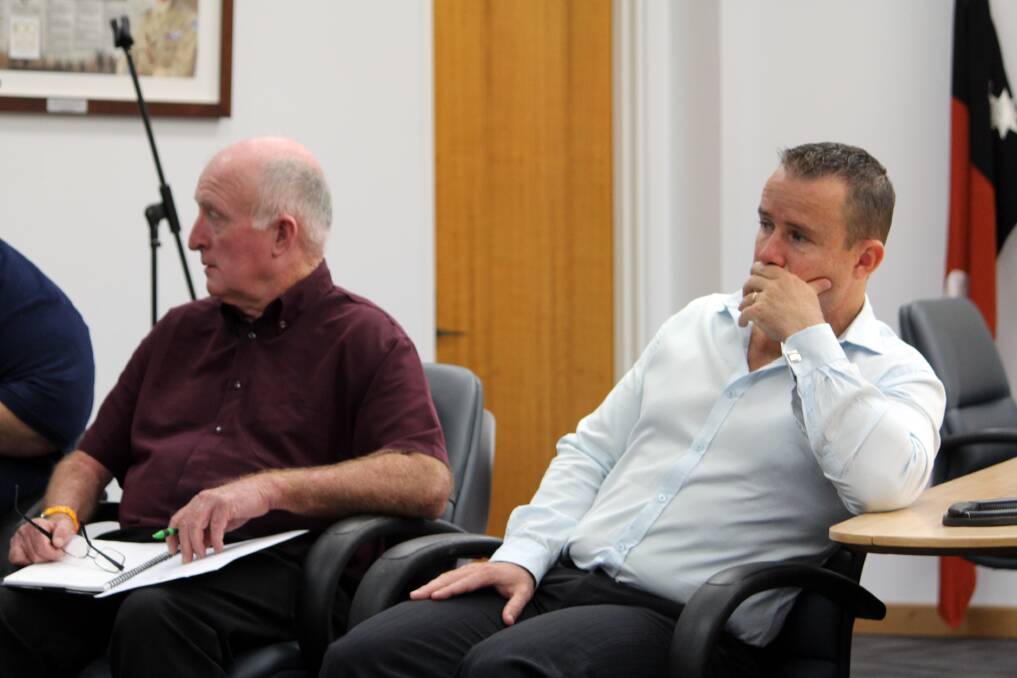
“WE DON’T want this shit in our community”.
Subscribe now for unlimited access.
$0/
(min cost $0)
or signup to continue reading
It is a stance one Katherine resident implored the community to adopt when the Northern Territory government held a public hearing into methamphetamine usage in town on July 14.
The hearing was hosted by a government select committee, chaired by Member for Blain Nathan Barrett, charged with looking into the impact the drug - also known as ice - is having on the Territory.
Taking a no-holds-barred approach to sharing how ice had impacted her life, the resident told the hearing that she had taken the extraordinary step of reporting her husband to police.
“My husband was the biggest drug supplier,” the resident said, explaining that her husband had been jailed after she reported him for the safety of her children.
She added that she had experienced the full effects of his crimes, including domestic violence.
Her story was the glimmering tale of hope amid myriad anecdotes describing the growing issue of ice usage in the Katherine region.
It came as the hearing found consensus that relationships and proximity in the close-knit community had resulted in an underreporting of ice-related activity in Katherine.
Northern Territory Police Northern Commander Bruce Porter, who oversees 28 police districts, said a reluctance to report was the biggest issue blocking authorities from tackling ice suppliers.
“We keep hearing all this information of ice, ice, ice,” he told Katherine Times.
“Yet no one is giving any information to police themselves about people, locations or any other information surrounding suppliers.
“To be able to tackle this, we need people to report this information to us.”
Michelle Kudell, the executive officer of the Association of Alcohol and other Drug Agencies NT, reiterated the need to involve police in order to effect a positive outcome for the community.
AADANT is the peak body for up to 30 non-government agencies providing treatment services in the Territory.
Surveys conducted with AADANT’s agencies discovered a 9 per cent increase in presentations in methamphetamine usage over a seven-month period.
The data was collected in September 2014 and March 2015, and was based on anecdotal evidence reported by the agencies.
Ms Kudell stressed that a “level of error” must be understood with such surveys.
However, the results identified Darwin, Alice Springs and Palmerston as regions where ice was an issue.
The results also showed ice was “certainly an emerging issue in Katherine”, according to Ms Kudell.
Mr Barrett said the community hearings and forums were an important step in making recommendations for the government’s response to the issue.
“There is definite fear in the community that the Northern Territory could become what is anecdotally happening in regional Victoria and regional New South Wales, where people fear that huge volumes of the community are actually on this drug,” Mr Barrett said.
He said the NT was “very lucky that [ice] hasn’t taken a hold here” yet, but believed the issue was a “red-hot go”.
“I think that people do and genuinely should feel the threat of it,” he said.
“I do in my community.”
Localised solutions were required to complement the government’s efforts, Mr Barrett added.
“I think we need to move quickly and I think we need to stomp on the head of this,” he said.
“We need communities on board with us.”
The committee is scheduled to deliver its recommendations on September 17, but Mr Barrett said he expected the date to be moved back to allow consideration of the findings of the federal government’s ice taskforce.
An interim report compiled by the taskforce was due in mid-2015, with a national ice action strategy set to be completed before the end of the year.
Originally published as Katherine resident takes drastic action on ice scourge by Katherine Times.

